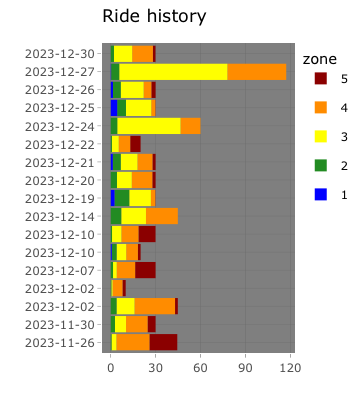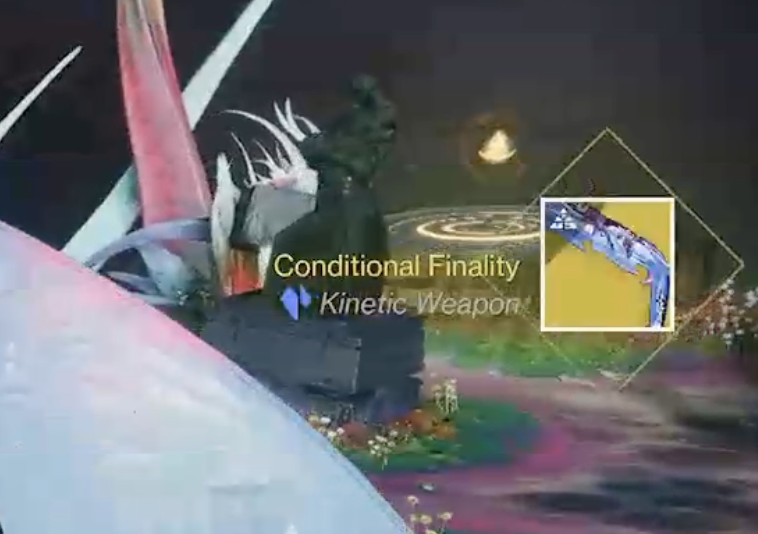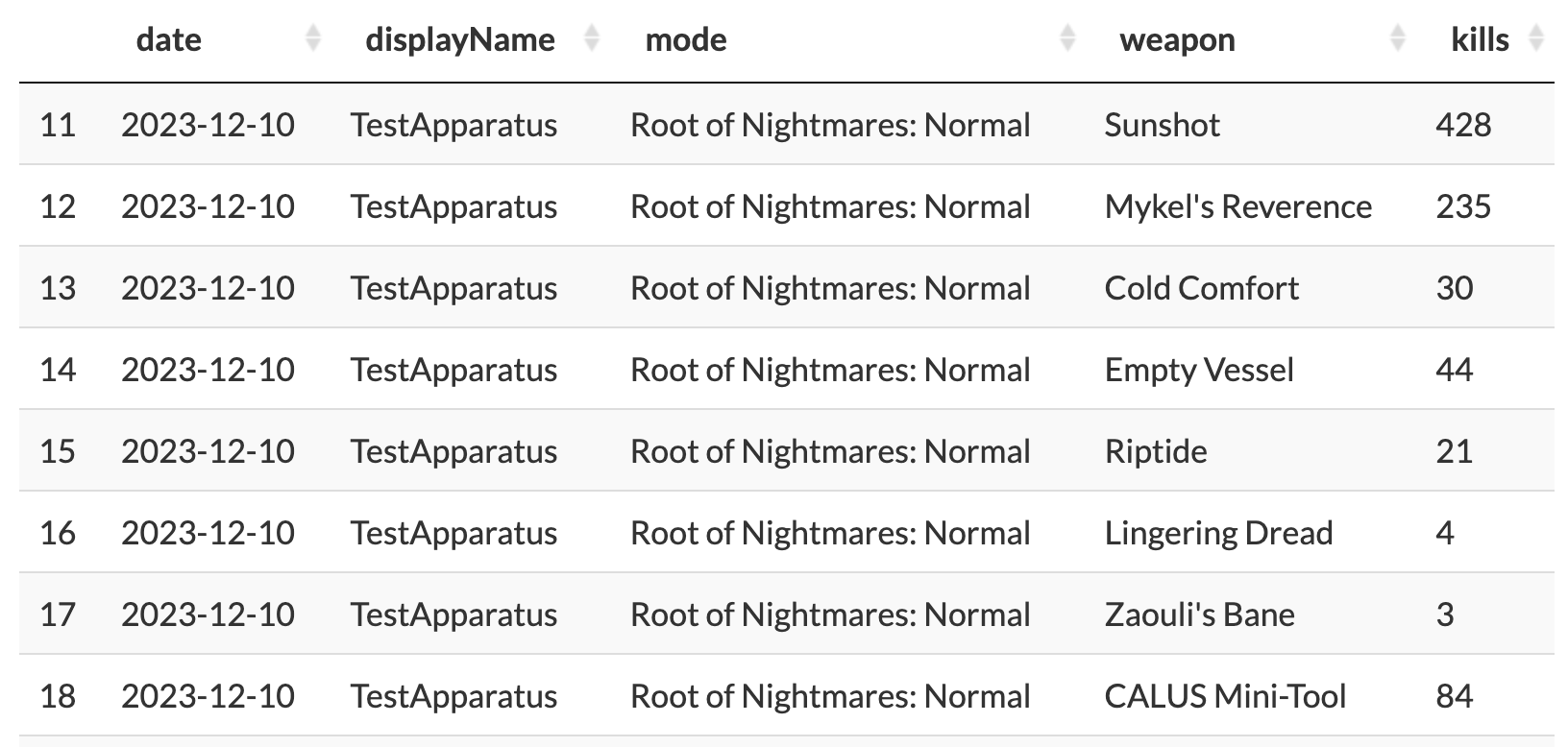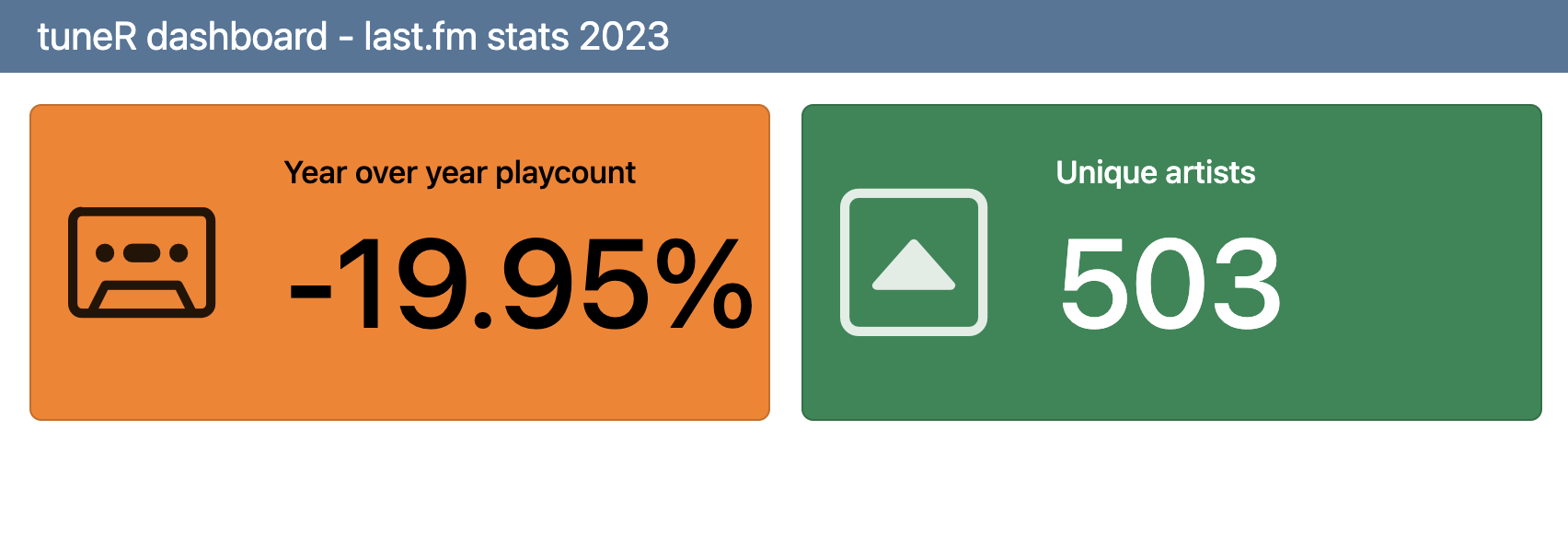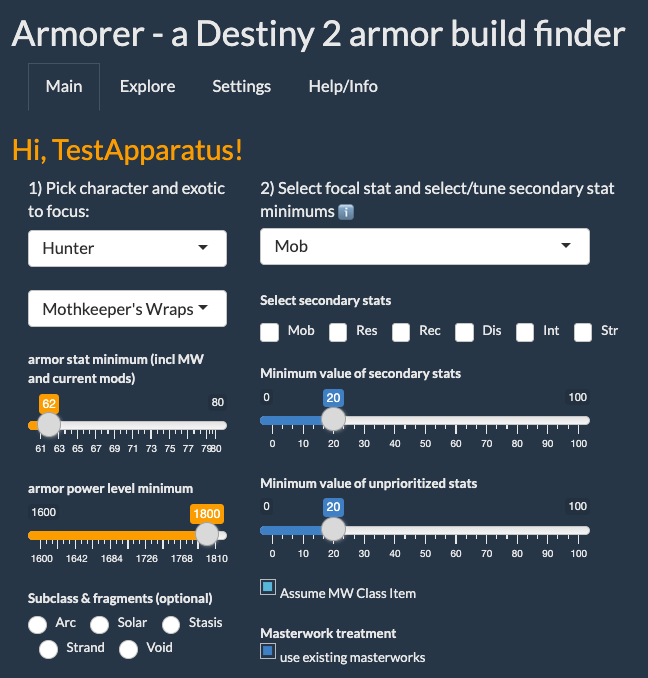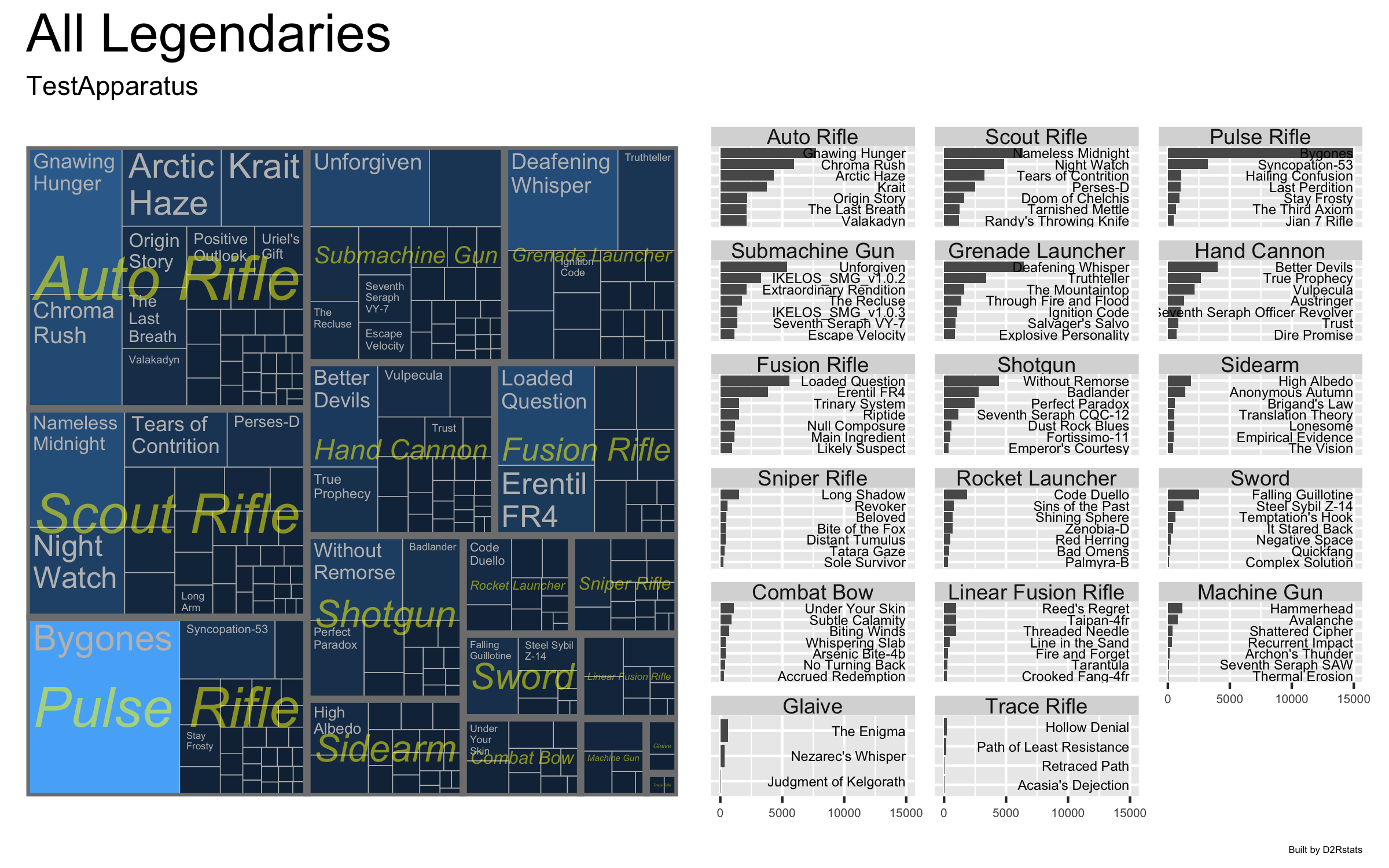Don’t mind me; I’m just testing out enabling like post types.
Here’s a post of my own that I like, about learning some python in a comfortable place.
- Huge revision of the backend method for stat calculation, making it more flexible and accurate
- Highlighting of masterwork items in display
- Proper forwarding of selected ability fragments to DIM for loadout building (this was harder than I thought it would be)
I did this two-hour power zone ride the other day – whoooo! – and now all the other rides in my recent history plot look like lil tiny guys.
This PVP dashboard isn’t quite yet committed to my D2Rstats project, but it’s close to being ‘ready enough’! As usual, I’m impressed and excited at what Quarto can do. It’s really fun to develop this way.
I had a really nice time running a Destiny 2 raid with pals on Saturady. It’s fun to hang out with nice people for a few hours while wielding space magic. I started running Sunshot again recently, and it put in some work.
Whispers: and the exotic dropped for me, too!
(Game info from my own tool, D2Rstats.)
I’m getting my last.fm stats toy updated early this year. Look out, Spotify Wrapped! I’m also using this as an opportunity to try out the very exciting new Quarto dashboards capability.
The last couple of weekends I’ve been slowly working on some improvements to Armorer, my Destiny 2 loadout finder build in Shiny.
Notable enhancements for this release include:
There are some bugs to address and optimization to perform, of course. But, with these improvements, the tool is finally just about as functional as I have long wanted it to be! I think it’s really pretty good, and I’m pleased and proud to have made something sophisticated and useful. I hope some more Destiny 2 players will try it out and let me know how it works for you.
I had some really nice hours this weekend working on my Destiny 2 loadout finder project, Armorer. All my current work is on the backend, and will result eventually in a lot more flexibility in armor piece stat calculation, and – I hope – faster performance. This big Shiny application is complex enough that I can see the rest of the work to do right in front of me, and I know that completing all the revisions is still a pretty substantial piece of work!
Really great ride this morning to start my Sunday. It’s a busy week: I’m remotely attending Posit::conf in addition to the pile of regular things going on, and I’m enjoying watching enthusiastic attendees join the conference discord and say hello.
I’m practicing some R package development today, in service of simplifying my D2Rstats tools (github.com/ats/D2Rstats). {usethis} is such a great help at learning and doing this, and I’m also cribbing from Karl Broman’s nice tutorial (kbroman.org/AdvData/18_rpack_d)
I’m publishing a project I’ve been tinkering with for a while and finally decided to make “good enough” to share! D2Rstats is a set of Quarto notebooks that fetch, store and make fun and useful data out of your Destiny 2 postgame carnage reports, such as this all-time weapon treetop. If you’re comfortable enough with R, it can be a jumping off point to exploring your own game data further. It’s been a lot of fun to refine this, and I’ve learned a ton along the way.
You can find all my Destiny 2 related projects over at deardestiny.blog.
